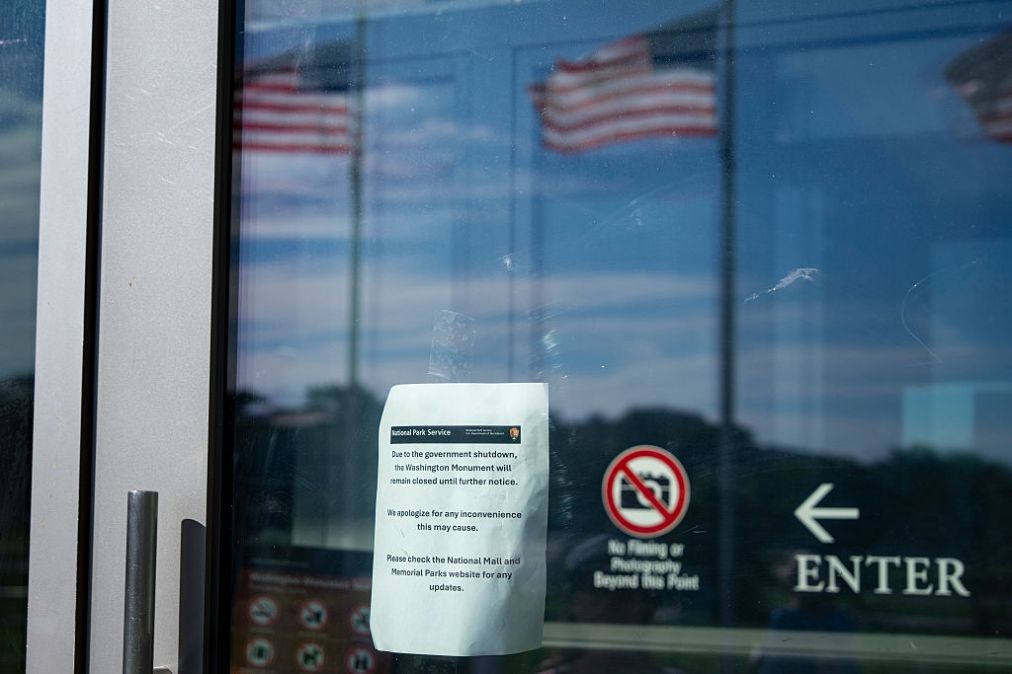How agency IT operations will play out during the shutdown

Much of the federal government came to a halt Wednesday, leaving agency operations and hundreds of thousands of federal employees in limbo.
IT offices and the Offices of the Chief Information Officer are among those affected by the shutdown, although to varying degrees. An analysis of the nearly two dozen civilian Chief Financial Officer Act agencies found that some agencies explicitly outlined plans to scale back IT operations amid the shutdown, while others deemed several IT staff members essential for managing technology and cybersecurity infrastructure.
Here’s a breakdown of how each agency is handling IT operations during the shutdown:
Nearly 60% of USDA’s OCIO staff are expected to be furloughed under the agency’s contingency plan, with 730 employees sidelined out of 1,243 during normal operating times. During the shutdown, the remaining IT staffers will be responsible for supporting a variety of Agriculture tech infrastructure, including data center, cybersecurity, and enterprise architecture, as well as identity, credential and asset management work.
Most OCIO positions are paid for through Agriculture’s working capital fund, though the contingency plan notes that the IT office will tap into its “revolving fund” during the shutdown as its “primary source” of financial support.
Some IT and cybersecurity work at USDA will be paused during the shutdown, including privacy management and compliance activities, audit and compliance, and training and awareness.
While the number of retained workers within the Department of Commerce is relatively the same as it was in 2023, it represents a larger percentage of the now smaller workforce at 19% than it would have in the previous plan, which would have retained 16%.
OCIO: The language for the shutdown operations for the department-level CIO office is unchanged from 2023, with one individual taking responsibility for shutdown tasks and assurance that the office will continue to work on critical IT functions. If the lapse in funding continues for an extended period, there is also the potential for staff to be recalled on an intermittent or full-time basis for cybersecurity and maintenance work, and limited staff may be called for administrative functions.
Census Bureau CIO: An estimated 13 employees would be able to complete shutdown operations in three days — compared to 22 employees in as much time in 2023. Excepted functions were relatively similar compared to the previous plan, though the 2025 document also adds support for the transition for the Boundary and Annexation Survey and the 2026 Census Test, which is a field test for the upcoming decennial census in 2030.
National Oceanic and Atmospheric Administration CIO: Up to three workers are designated for shutdown operations, compared to two in 2023. Those activities are supposed to take one to five days. Excepted functions that are the same as 2023 include those with funding that’s not through annual appropriations, providing support for IT involved in protection of life and property, and maintaining websites for critical weather warnings. The 2025 plan adds emergency protection of spectrum assignments and foreign relations functions.
Patent and Trademark Office CIO: Staff retained will be “minimal” and will include those responsible for maintaining the office’s IT work, operating the CIO’s Command Center, and providing incident response management.
Some employees within the agency’s OCIO are expected to continue working, as a total suspension of this staff “would pose a threat to property,” the agency plan stated. It is not clear how many OCIO employees are excepted from the furlough, though the office is listed under the “necessary to protect life and property” category, which has a total of 10 retained employees across divisions.
Details on DOE’s shutdown plans are scarce, laid out in a two-page document that lists the various agency offices that will have a “small staff” working to perform functions tied to “the safety of human life or the protection of property,” or those activities that align with the president’s duties and powers. The OCIO is one of those offices, though it’s unclear how many IT staffers are included.
Department of Health and Human Services:
HHS is retaining fewer employees than it did in its plan from the last fiscal year, at 41% of its current workforce. A plan for fiscal year 2025 would have retained 55%. The overall total of workers at the agency reflects the Trump administration’s moves to restructure and reduce the workforce at the agency, showing a reduction of roughly 12,000 workers from the same time last year.
The department-level CIO’s office, which sits within the Office of the Secretary, isn’t specifically mentioned in HHS’s plans, but it does provide some detail on staff needed to safeguard computer data. The agency estimates that 387 staff members are exempted for the protection of computer data, compared to 406 in the previous fiscal year plan.
While IT information was sparse in plans for each of HHS’s subcomponents, the Centers for Medicare and Medicaid Services did note that it wouldn’t be able to provide oversight to many major contractors during a shutdown, including those for Medicare administration, Medicare call centers, and other IT services. The Health Resources and Services Administration similarly said its “Vaccine Injury Program, IT and administrative contracts would be delayed.”
Department of Homeland Security
DHS provides detailed staffing plans for many of its subcomponents, including the Federal Emergency Management Agency, Customs and Border Protection and the Cybersecurity and Infrastructure Security Agency, among others. CISA, for example, is sidelining almost two-thirds of its employees.
But there aren’t specific numbers or instructions for DHS’s OCIO, other than general guidance for the use of information technology equipment during a shutdown. In short, excepted and exempt DHS personnel are permitted to continue using their DHS-issued devices, while those who are furloughed “may continue to retain and passively monitor” those devices.
Websites for DHS and its components will be accessible but will not be maintained or updated, barring instances where providing specific information is “necessary” or if “there is a reasonable likelihood of imminent compromise in some significant degree to human lives or property.”
Department of Housing and Urban Development
HUD’s public contingency plan for OCIO is relatively light on details; the 2023 document is no longer accessible and the current plan simply says that “a minimal number of staff and services to support excepted activities” are working through the shutdown.
Excepted activities in the IT shop include technology, administrative and project management work that supports excepted agencywide work that requires information technology. A variety of HUD work with IT systems and infrastructure is required and will continue unabated, with OCIO managing various desktop and network applications, including the help desk.
While it’s not clear what the excepted operations are for the department-level CIO office, individual bureaus cited specifics for IT in their plans.
For example, the National Parks Service, U.S. Fish and Wildlife Service, Office of Inspector General, Assistant Secretary for Indian Affairs, Bureau of Land Management, Bureau of Safety and Environmental Enforcement, and Bureau of Indian Education noted that IT services that allow essential functions to operate would be supported by its staff.
About 89% of the DOJ’s employees are excepted from the furlough, including staff charged with managing the agency’s 24/7 Justice Security Operations Center, according to agency guidance. The center is a hub for network surveillance, cybersecurity inquiries and interagency information exchange. The DOJ said these employees are necessary for IT operations and systems supporting law enforcement operations that continue during a shutdown.
Some employees responsible for IT support are also excepted from the furlough, as they are funded by the Justice Operations, Management and Accountability (JOMA) account rather than congressional appropriations.
Notably, the number of excepted employees at the agency totals 102,291, an increase from the estimated 96,688 employees outlined in an archived webpage of the 2024 contingency plan.
DOL’s Office of the Assistant Secretary for Administration and Management has selected “a minimal IT staff” within the OCIO to oversee tech operations. Those employees are now tasked with managing Labor’s technology services, applications and website, in addition to having other IT security responsibilities that support the agency’s excepted and exempt staff.
Some of those services include email, network, mobile devices, unified communications, help desks and IT systems, specifically those excepted, financial and procurement activities.
Outside the OCIO, a collection of Office of Workers’ Compensation Program staffers are still working on the agency’s IT modernization, which is funded through the Technology Modernization Fund. Those workers are not subject to furlough since their compensation comes via the TMF as opposed to annual appropriations.
Of the State Department’s 27,300 “direct-hire” employees, 16,864 are considered “excepted.” That represents a substantially higher number of workers than in its previous plan, which retained 42% of its workforce.
While details were thin on exactly what might happen to CIO activities, the Bureau of Diplomatic Technology, which houses that office, was part of the category of components that will generally have their appropriations lapse after the shutdown. However, specific activities within that bureau will continue.
The Diplomatic Technology bureau’s cybersecurity activities were listed among the components with “minimal” residual balances that would have expected activities to move forward, and its mobility and desktop support work were listed under those components with “some” residual balances. Under a previous plan in 2024, cybersecurity activities were listed in the category subject to a lapse in appropriations.
The DOT is retaining 77% of its 53,717-member workforce, according to its plan. While the OCIO wasn’t mentioned specifically in the document, IT plans are noted at the bureau level.
The Federal Aviation Administration lists IT among the support services to safety positions that are excepted, though website updates are suspended. The Federal Railroad Administration also retains the director of IT and an IT specialist to support shutdown operations, as well as maintenance of contracts and services that support safety.
The Office of the Secretary, Office of the Inspector General, and the Pipeline Hazardous Materials Safety Administration also excepted certain IT functions. And the Maritime Administration specifically noted that it would continue support for its data center and cybersecurity functions.
The contingency plan page for the Treasury Department does not include an overall OCIO plan, though it does link out to plans for various departmental offices, as well as the IRS, the Bureau of the Fiscal Service, the Financial Crimes Enforcement Network, the Treasury Inspector General for Tax Administration and others.
According to the IRS’s contingency plan, there are 6,309 exempt positions in the tax agency’s IT shop. That number is static regardless of whether it’s filing season or not.
Department of Veterans Affairs
About 97% of VA employees are expected to continue working through the shutdown, including some staff within the agency’s IT office. The office, as laid out in the contingency plan, will keep “direct and indirect” IT support to the Veterans Health Administration, the Veterans Benefits Administration, the Board of Veterans’ Appeals and other offices as needed.
Excepted staff will be responsible for network maintenance and protection, data center operations, and enterprise infrastructure operations. The Electronic Health Records Modernization Integration Office will also continue its efforts to transition the VA to a new electronic health record system, with leftover funds from multi-year appropriations.
While several activities remain status quo at the VA, the VHA’s research functions will stop once multi-year funding runs out, while VBA tasks, such as data analytics and the deployment of automation tools, also come to a halt during the shutdown.
Environmental Protection Agency
The EPA’s technology contingency plan is unchanged from 2023. It calls for most IT systems to be pared back to “basic operational status.” In practice, that means providing all necessary cybersecurity controls to safeguard the agency’s data assets and IT infrastructure.
The CIO, meanwhile, is charged with identifying specific systems required to continue operating throughout the shutdown. The EPA’s Office of Mission Support will team with senior information officials across the agency to come up with a list of systems that should continue to operate, including guidance for how that will be done. Systems and devices that don’t fall into that category would undergo an “orderly shutdown.”
Other IT activities overseen by OMS would be preparing enterprise IT infrastructure for supporting regular operational workloads, staffing help desks, supporting communications via messaging and website updates, and coordinating with acquisitions staffers on restoring key contracts.
General Services Administration
Guidance for the GSA’s IT office remains largely unchanged from recent years. Both the 2025 and 2023 contingency plans state that the office is entirely funded through the Working Capital Fund, an exempt funding source that allows for the retention of workers. However, the plan also states, “The office may initiate a phased shutdown based on available resources.”
“GSA’s role as an aggregator of large numbers of Government assets and a supplier of critical tools, equipment, and supplies to other Federal agencies requires that GSA retain adequate staffing under a lapse in appropriations in order to protect Federal property under GSA’s custody and control,” the 2025 plan stated.
The space agency’s contingency plan does not detail how its IT office will operate in a shutdown, opting instead to provide figures on a space center-by-space center basis. NASA does reveal that it will not be updating its website, and only research activity “aligned with presidential priorities” will continue.
The agency’s chief financial officer is designated to lead an executive committee charged with overseeing and planning for the operational lapse.
NSF is retaining 25% of its 1,402 workers under its plan. While that’s a higher percentage of the workforce than a plan from 2023 — when 22% were expected to keep working — it’s a smaller number of workers given cuts to the agency’s workforce.
The CIO’s office isn’t mentioned by name in the document, but it does make reference to IT as a priority. According to the plan, NSF will maintain its physical and computer security at its headquarters and related facilities. That includes IT and equipment, it said.
The NRC is pausing a variety of tech-related functions, including “routine financial management, administrative, and information technology support services,” per its contingency plan. However, the CIO is still responsible for maintaining IT infrastructure and support for the NRC’s excepted functions. If agency operations “must be permanently suspended,” the NRC’s CIO must ensure the transfer of official agency records to GSA, OPM or NARA.
Overall, the NRC says the agency will offer “limited” IT support on excepted functions, naming computer network control, records storage and retrieval, and automated data processing hardware and software maintenance as examples of those functions.
Office of Personnel Management:
OPM will retain a higher percentage of its workforce than previous years, with 90% of 2,007 people staying on board. A Wayback Machine cache of that same page around the same time last year shows that 80% of the total workforce would remain under a shutdown, though its number of workers was higher at 2,869 employees.
According to the current plan, the CIO office will be furloughed with an undisclosed number of employees expected to carry out necessary activities.
As part of the implementation, the plan also cites improvements from the increased use of technology, including the ability to notify employees during a shutdown faster and at a lower cost. It also noted that the agency’s website would be kept up to date with operating status in case of weather-related events or closures.
The agency instructed employees to monitor its website and media outlets, noting that most furloughed workers don’t have government phones to communicate updates with them.
Social Security Administration
The shutdown is expected to have mixed impacts on the technology operations at SSA, particularly since several of the agency’s core functions continue to operate during a shutdown.
“Critical IT support” will continue for daily processing activities, along with IT acceleration work supported by the Technology Modernization Fund, according to the agency’s contingency plan.
In the Office of the Chief Information Officer, 694 employees were deemed excepted and will continue working with delayed pay to support IT infrastructure, cybersecurity functions and TMF projects.
But activities like IT enhancement projects will not continue during the shutdown. The plan does not detail these projects, although previous documentation suggests that they include upgrades to outdated technology, sometimes through the use of artificial intelligence.
At the SBA’s OCIO, nine “core” employees are working through the shutdown, a figure unchanged from 2023 — though nearly a dozen other positions that had been funded through the American Rescue Plan have lapsed. These nine IT staffers are responsible for managing IT systems and providing technical support for computing infrastructure.
That scaled-back staff, the contingency plan notes, is equipped to sustain “minimal operations without incurring unreasonable risk” to SBA IT systems and cybersecurity. The excepted staffers are also providing services to SBA activities, including the agency’s disaster loan and HUBZone procurement programs.






